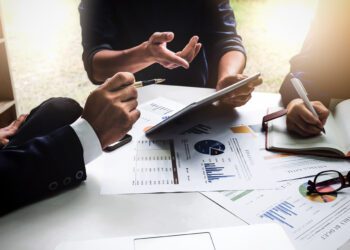Virtual Reality – can a digital twin help reduce risk within high hazard sectors?

Despite being around for some time, Virtual Reality (VR) has never really gained traction within the high hazard sectors as a tool to help reduce risk. Perhaps this is because it’s seen as a gimmick – a solution without a problem? So what is VR and can it indeed be used to reduce risk?
WHAT IS VR?
VR is the use of computer technology to create a simulated environment. Its most immediately recognisable component is the Head-Mounted Display (HMD) which brings a 3D computer model of an asset to life and immerses the user directly inside this experience. By stimulating as many senses as possible, such as vision, hearing, touch and even smell, the HMD acts as a portal into the artificial world depicted by the computer model. The only limits to near-real VR experiences are the availability of content and computing power.
VR IN HIGH HAZARD SECTORS
Perhaps the main reason that VR has not so far found favour is that industry remains understandably focused on hardware and operations. It is interesting, however, to step back and consider what wider benefits this technology offers across the business.
VR is one of a range of ways of presenting what is known as a “digital twin” – a digital carbon copy of a real asset whether that be an offshore oil and gas platform, a passenger train, wind turbine, etc. When you view VR as a means of bringing this digital twin to life, rather than merely a technology that needs an application, that’s when the benefits really start to become apparent, as illustrated in Figure 1. For instance, imagine if you could not only walk through a developing design, but could also in real time visualise hazards, such as fire or explosion, to shape improvements and help plan the best route for escape.
Another potential barrier to the adoption of VR within high hazard industries is the perception that it is very expensive. There have been instances of isolated pockets within large corporations unknowingly developing duplicate 3D models to achieve different goals. This duplication clearly drives up cost, but is perhaps understandable given that the benefits are spread across very diverse facets of the organisation, whether department, function or lifecycle stage. By developing a single digital twin for the complete asset, and actively communicating and sharing this across the business, significant economies of scale can be realised, presenting a very cost-effective way of proactively reducing risk.
Furthermore, it is highly likely that a 3D model of the asset will already exist somewhere within the business, perhaps known only to someone who is unaware of the wider opportunities it presents. For example, the designers of the facility may have built a 3D computer model to aid structural analysis or layout design.
The UK’s Construction Design and Management (CDM) Regulations 2015 require designers to maintain and collate detailed documentation to fully and accurately represent the as-built status of the facility to be handed over to the owner/operator. This is commonly achieved via Building Information Modeling (BIM) data. This is a hugely powerful but grossly underused resource. It can be easily converted into a digital twin allowing the business to realise all the benefits illustrated in Figure 1 throughout the life of the asset. It is also crucial to remember that we are only talking here about risk reduction benefits. Creating a digital twin of any asset delivers a multitude of wider cost and efficiency savings and programme and quality benefits, further spreading the associated costs and making the application of VR even more attractive.

Figure 1 – How Virtual Reality can reduce risk within high hazard facilities
Finally, you don’t need an expensive, high-spec VR simulator housed within a dedicated facility to achieve these benefits. Very simple low-cost hardware like Google’s VRcardboard goggles (see Figure 2), which cost just a few dollars, convert a standard smart phone into an HMD that delivers a sufficiently immersive experience to achieve these benefits. Perhaps even more importantly, such simple hardware is highly portable and, when blended with the ubiquitous smart phone, makes this VR tool readily accessible to everyone across the business. It can be used anytime, anywhere, by anyone, maximising its use and impact.

Figure 2 – Google’s “VRcardboard” Virtual Reality goggles
CONCLUSION
Do you have a digital twin of your asset? If so, is it being shared across the business to help reduce risk? If not, what’s stopping you? “Virtual reality is like dreaming with your eyes open.” (Ref. 1). As risk management professionals, we dream of ways to reduce risk. Harnessing a digital twin through VR can help make these dreams a reality.
References:
1. Brennan Spiegel – Director of health research at Cedars-Sinai, California (via Twitter).
This article first appeared in RISKworld 35







